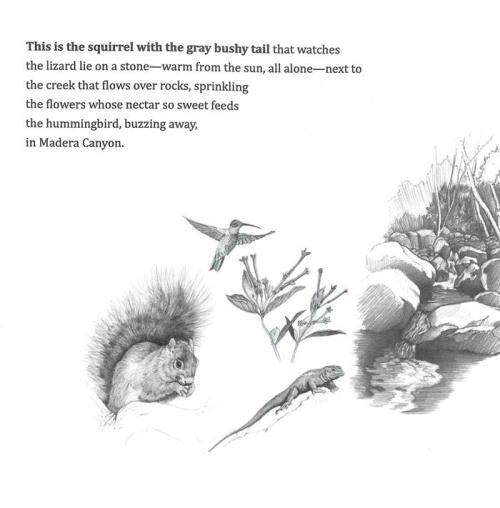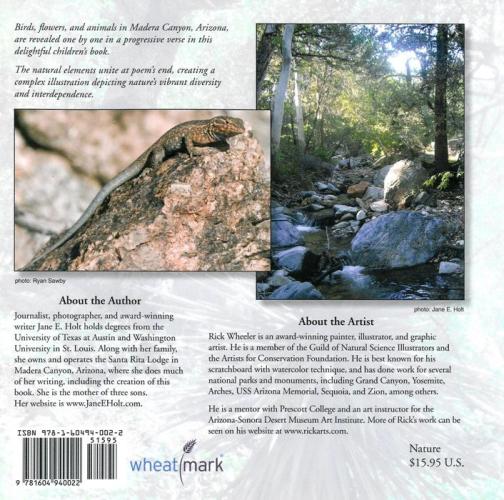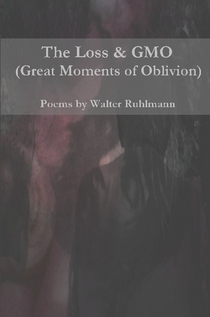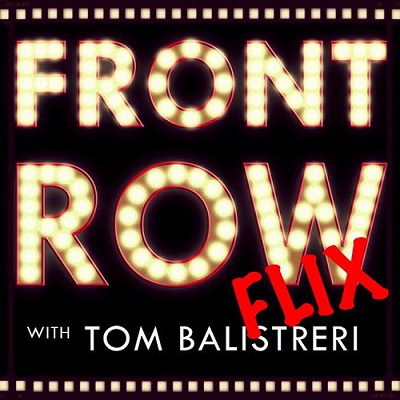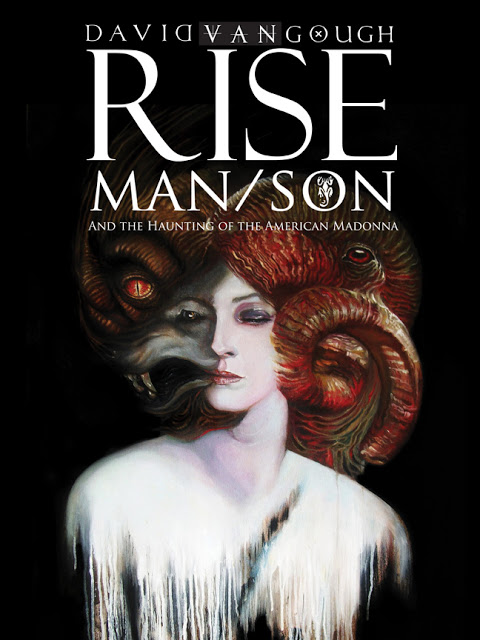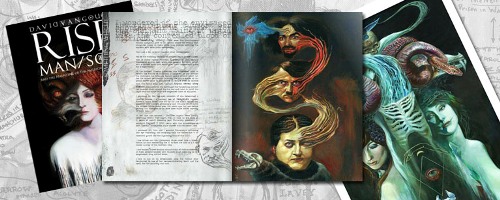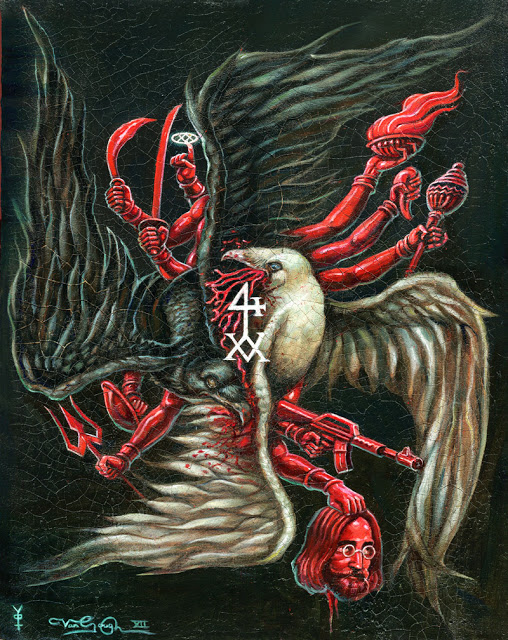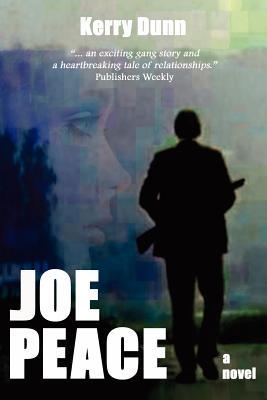Other Nick reviews: here and here
Sam Peckinpah’s Major Dundee and Juan Antonio Bayona’s The Impossible
I recall so well the braggadocious accolades that accompanied the 2005 “restoration” of Sam Peckinpah’s Major Dundee (1965), the much-maligned Western drama unceremoniously dumped on the market where it instantly became something of a colossal flop. Peckinpah had run into opposition from Columbia (the studio footing the bills) and non-compliance from his producer Jerry Bresler (a yes man for the front office). But in 2005, some seventeen years after Peckingpah’s death, critics like Boston’s Chris Fujwara and The Washington Post’s Steven Hunter were falling all over themselves with superlatives extolling the restored version as “magnificent…a unique piece of threatening…alcoholic cinema” with “high-end adult” themes and “a better grade of savagery,” carrying with it the ballast of “actual ideas…back in all the fractured glory and confidence.”
I would just like to go on record as saying that the only thing “fractured” herein is the movie, either in its theatrical or restored cut, the latter an approximation of what Peckinpah might have hoped for had his own steady hand been on the Moviola. Yet I cannot even lay as much claim or faith in Peckinpah’s personal aspirations for Major Dundee, having begun it, as he did, without a finished script and basically shooting with only a very fragmented vision of the end result bouncing around in his head. In hindsight, Peckinpah’s unwillingness to revisit the film years later seems to attest to his own painful divorce from this artistic implosion of ‘high-end savagery’: a film that, doubtless, Peckinpah found nearly impossible to reappraise honestly without nursing a very large bottle of scotch.
Peckinpah had initially assigned the script writing duties to Harry Julian Fink, a middling writer (at best) who had been more prolific in television than movies. Dissatisfied with Fink’s prose (at 163 pages, it tended to ramble on – and on), Peckinpah undertook to edit down the material himself with assistance from Oscar Saul, who was by no means a heavy hitter but had more movie credits to his name. Yet, the results of all this perpetual tinkering seem to have given way to the old adage about “too many cooks spoiling the broth.” While Peckinpah had ambitions to create a sweeping epic masterpiece in the Western genre, comparable to David Lean’s Lawrence of Arabia (Peckinpah’s favorite movie) from 1962, what he ultimately succeeded in resurrecting was the modest Monogram B-programmer with an A-list roster and production values that nearly sank the studio.
Major Dundee is an intimate Western drama. Yet, in casting Charlton Heston as his title character, Peckinpah all but diffuses the ill-fated chimerical saga into one where its larger-than-life protagonist is unable to part the wilderness and lead his people onward without sacrificing his own powers as a major star. Heston championed Peckinpah’s vision for the movie when no one else seemed even mildly interested in making it. But he was to regret this decision when the director embarked upon his own irascible odyssey for perfection. Heston’s towering performance – however subtly nuanced – is nevertheless working against type. Not that Heston ever played a steely-eyed bastard before. In fact, he’d convincingly done so for William Wyler in another Western, The Big Country (1958).
But Charlton Heston and Major Amos Charles Dundee just don’t seem to go together. Heston gives a very credible performance, only the starch in those army britches is just too stiff, and the character never evolves beyond a very cold-hearted martinet who briefly loses himself in the arms of a Hispanic prostitute (Aurora Clavell). This after having already seduced the top-heavy Teresa Santiago (Senta Berger) during an afternoon swim. The inability of the screenplay to give us even an ounce of sympathy for this cruel taskmaster, and Heston’s unapologetic adherence to the character as written, yields a characterization dangerously close to becoming the villain of the piece. Indeed, by the last act the audience is more apt to root for the doomed southern Captain Benjamin Tyreen (Richard Harris), who meets with a vicious if heroic fate, than the unrepentant Dundee, who is still willing to sacrifice every last man in his detail to save his own face by apprehending the blood-thirsty Apache marauder, Sierra Charriba (Michael Pate).
Harris’ performance is the standout in the film, full of contempt for Dundee’s methods but not without more than a modicum of self-loathing that challenges the audience to dig a bit deeper into his motivations and ultimately come to respect Tyreen’s sacrifice. The others in the cast, Jim Hutton as the regimented Lieutenant Graham, Michael Anderson Jr. as bugler Tim Ryan (on whose surviving diaries the film’s narrative is supposedly based), and particularly James Coburn’s masterful rendering of the one-armed native guide, Samuel Potts, offer the briefest of reprieves and escape from Dundee’s oppressions. But in the end they’re not enough to make us forget what a terrific monument to the damned Dundee is: a polarizing force who maintains the flimsiest tyrannical control over his men using nothing greater than the art of intimidation to keep them resentful, but also, regrettably, in line.
Adding to Peckinpah’s woes, Columbia chose to slash the film’s budget by a million and cut his shooting schedule down by fifteen days, just two days before principal photography was about to begin. Peckinpah’s ability to work under such conditions bears out his commitment not simply to the actors or the film, but to will a finished product more finely wrought than the average fair of its day, yet painfully out of step with what the paying public wanted to see. The other great sin foisted upon the production, after Columbia executives decided to oust Peckinpah from the director’s chair and recut the movie themselves, is its jaunty Daniele Amfiteatrof score, full of rousing marches and other rambunctious orchestrations better suited for a Mexican fiesta on Olivera Street than the somber depiction of one man’s spiral into a kind of self-imposed purgatory. For the 2005 “restoration” a new score was commissioned from Christopher Caliendo, more in keeping with Peckinpah’s vision for the film.
Yet that vision remains myopic at best. The story hardly improved by the added 14 minutes of “lost” footage placed into the film. There’s simply more to consider and – unfortunately – less to admire. Howard Kunin, William A. Lyon and Donald W. Starling’s editing retreats into a series of visually overlapping montages. We are exposed to Sam Leavitt’s breathtaking cinematography: the sprawling Mexican landscapes imperfectly cut down into snippets awkwardly running into each other like jigsaw puzzle pieces that don’t fit but are being forcibly made to give the appearance of a perfect interlock.
The story, such as it is, involves Union cavalry officer Major Amos Charles Dundee, mildly disgraced at the Battle of Gettysburg and relegated to the wilds of New Mexico where he micro-manages a prisoner of war camp. Prior to the main title sequence we witness the blood-thirsty Apache leader, Sierra Charriba, and his men massacre a small village of ranchers (men, women and female children, as well as Union cavalry sent there to protect them). Hence, when Dundee arrives with guide Samuel Potts he is committed to digging a mass grave. Upon returning to the camp Dundee decides to enlist as many of his prisoners for a special detail to hunt down Charriba. But Dundee’s motives are hardly altruistic or even in service of achieving justice for the fallen. Instead, his is an enterprising plan to rebuild his own tarnished reputation as a great military man and hopefully to elevate the army’s opinion of him from these currently abysmal circumstances.
Captain Benjamin Tyreen is hardly fooled by Dundee. Yet he remains chivalrous to a fault. Tyreen’s innate hatred of Dundee stems from an incident before the war when the Major cast his deciding vote in Tyreen’s court-martial from the U.S. Army for participating in a duel. In the theatrical cut our first encounter with Tyreen occurs after Dundee has already returned to base camp. He admonishes Tyreen’s refusal, and that of his fellow Confederates, to enlist in the cause of murdering Charriba. In the extended cut we meet Tyreen and these men as they strike a guard in their feeble escape attempt. Apprehended by Dundee and brought back in chains Tyreen and his men are informed that the guard they meant to merely wound has died of his injuries. Having been told by Tyreen that he would rather hang than serve, Dundee accepts Tyreen’s terms and begins to build his gallows. This stalemate is eventually broken by Tyreen, who physically assaults Dundee while still in chains and confers on him the terms for his complicity in the plot. Tyreen and his men will hunt until the last Apache is dead, but with the understanding of a full pardon awaiting them at the other end.
Although Dundee never actually agrees to these conditions he does not outwardly reject them either. Tyreen also promises that when the war against the Apache has ended his own private war against Dundee will result in the Major’s execution. Begrudgingly valued for his soldiering, as well as his gumption, a weird détente occurs between Dundee and Tyreen – tenuous at best, and infrequently threatening to break under pressure. Still, when push comes to shove, both men represent a united front that adheres to the mark of valor ascribed true military men. This is one of the oddities of the screenplay, for Tyreen repeatedly tells Dundee that he has no country after the civil war and seemingly zero loyalties to the newly formed United States of America.
The strained alliance between the men is divided along lines of class (cavalry vs. prisoners), further splintered by North vs. South and colored vs. white. When these factions are not busy warring with each other they infrequently engage the Apache in several disastrous battles that brutalize the men and inflict many casualties. Charriba and his posse retreat to Mexico, garrisoned by French troops loyal to Emperor Maximilian. Knowing that to cross the border means a direct confrontation, Dundee nevertheless orders his men across the Rio Grande, into a small impoverished town overseen by Teresa Santiago, whose husband was executed for supporting Benito Juárez’s rebels.
In a previous altercation with Charriba, Dundee lost most of his garrisons’ supplies, badly needed foodstuffs he was hoping to recoup in the village. Instead, Dundee shares what little remains with the impoverished villagers, allowing French forces to escape for backup. When these do indeed return to the village Dundee ambushes them by night, taking his lion’s share of badly needed supplies. Although Tyreen is cordial to Teresa, it is Dundee who conquers her heart – albeit very briefly. In an unguarded moment Dundee is wounded in the leg by Charriba’s arrow and forced to hold up in the French-occupied village of Durango – presumably for weeks – while Tyreen moves the men onward in search of this Apache viper. Losing himself in drink and self-pity, Dundee is discovered in the arms of a Spanish prostitute Melinche by Teresa who abruptly ends their vacuous affair, telling Dundee that for some men “the war will never be over.”
Tyreen returns with boastful swagger, challenging and humiliating Dundee in order to shake him loose of his inner regrets. A reformed Dundee returns to his men, feigning a sudden loss of desire to apprehend Charriba. The Apache leader falls for the rouse and plans his final attack, determined to murder Dundee and his men. Affectingly, Charriba’s arrival is met with a clever ambush instead. Bugler Tim Ryan, who has “become a man” by losing his virginity to a Spanish girl, fires the fatal shot that puts a period to Charriba’s reign of terror. Their mission completed, Dundee and his men are outflanked by the French at the Rio Grande, making repeated valiant charges to cross it but incurring massive casualties, including Tyreen, who, wounded but still bitter, defies death to delay a second detachment of French cavalry singlehandedly. Dundee and his fragmented forces cross the river and head for home.
In either its extended or truncated form, Major Dundee remains a curious flop. Its ascribed epic quality useful perhaps only to describe the way the film persistently misfires at every conceivable turn and on practically every artistic level – and this, despite Peckinpah’s rather obvious attempts to will a silk purse from its sow’s ear. The strangeness of this artistic implosion is that Major Dundee never catches even the tail fire from some weighty performers giving it their all, coupled with its vistas and straggly landscapes meticulously lensed by Sam Leavitt but rendered muddy and dull in Pathe’s flawed Eastman color process. These invoke world-weariness all too readily apparent in Heston’s mellifluous performance as the dower Dundee, but regrettably do not equate to, foreshadow or even infer a looming sense of foreboding and grand tragedy that Peckinpah hoped for. The…uh…romance between Teresa and Dundee is more dulcet than juicy and all but eclipsed by another: the fiery “bromance” between Tyreen and Dundee, two men who clearly share more than a mutual admiration beneath their outward derision of one another.
I’ve set aside my own admiration for Peckinpah herein; a film maker elsewhere revered. But in all honesty, Peckinpah has made it all too easy for me to disregard and dislike Major Dundee. The flaw is not entirely his to bear. But in the final analysis, the film is little more than a major blunder, resurrected to prominence by its renewed resurgence on home video, though not to any greater level of artistic poignancy that one would have anticipated. I dislike being overly critical of movies in general. Even the bad one’s take time and ingenuity to make. But Major Dundee is a film that had a lot going for it at the start. That all its attributes combined come to more gumbo than glory left me feeling cheated from my viewing experience.
And I watched it twice, first in its newly restored director’s cut, then again in its original theatrical cut. I will say this: for me, at least, the extended version just seemed like too much of a bad thing, the prolonged scenes never enhancing my understanding of the story. The pacing of the theatrical cut played much more “clean” in its narrative approach and to the point, at least, in my opinion. Regrettably, the essential tension is all but ruined in the theatrical cut by Daniele Amfitheatrof’s brutally buoyant underscore, laughingly making some of the visuals play like a badly blunted operetta rather than a Western epic. Christopher Caliendo’s 2005 score parallels and punctuates the action far more astutely.
Major Dundee has been released by Sony exclusively through Twilight Time/Screen Archives. We’ve been given the rare opportunity to watch both cuts, each on a separate disc with varying extra features. The 1080p image has been consistently rendered, illustrating the shortcomings of Pathe Eastman color film stocks. The image is very thick. Blue skies flicker purplish brown. I also have to say that the sequences shot at night are much too dark, particularly in the extended cut. Our introduction to Tyreen, being captured in his attempted escape from the camp, is a sea of blackness from which only Richard Harris’ wan face occasionally emerges from the murkiness as a disembodied head.
Flesh tones are more ruddy orange, though infrequently they look fairly accurate. Grain has been accurately reproduced. Again, the Eastman stock translates most of the outdoor landscapes into an indistinguishable brownish earthy tone. Trees are muddy grayish green rather than vibrant. Blue skies tend to appear washed out. These are not – I repeat – areb not a flaw in the mastering process. Sony has done their utmost to preserve the original look of the film. The audio on both cuts is 5.1 DTS but sounds infinitely more refined on the 2005 extended cut, perhaps because effects and dialogue had to be remixed with the newly recorded Caliendo underscore. Extras are somewhat satisfying. We get both scores on an isolated track. On the extended cut we also get an audio commentary by Nick Redman, Paul Seydor, Garner Simmons and David Weddle. There’s also a litany of extended outtakes and deleted scenes, the original trailer and its 2005 reissue, plus an exhibitor’s reel. Overall, I like what Sony and Twilight Time have done on this title. I just wish the material they had to work with – namely, the film – was more deserving of their hard efforts. Bottom line: not recommended.
Few natural disasters are as ingrained in my mind as the 2004 tsunami that decimated the coastal retreat of Khao Lak, Thailand, an event of such mind-boggling devastation its total comprehension is virtually impossible to fathom for those of us who were not there. The shaky images captured by terrified tourists on their iPhones and other home video recording devices flashing across our television screens were significant only in presenting the paralytic moment of impact and its immediate aftermath. But the overhead shots of earthy-colored rising tides consuming the coastline were strangely surreal, or perhaps even artificial, like a spectacular CGI effect created by Hollywood artisans instead of a raw and eviscerating act of Mother Nature.
I must confess to a naiveté. Until 2004 I don’t think I ever even heard the word “tsunami” before, or perhaps had but chose not to register it consciously as anything more than a big wave knocking over a few trees. Certainly, I had never seen one broadcast in real time and, God willing, hope to never experience such a cataclysm in my own life. But in the days and weeks that followed, survivor testimonies began to filter through the media outlets. These were not merely heart-wrenching but crystalized the experience as terrific and as awe-inspiring as any apocalyptic “end of the world” scenario Hollywood could concoct. Most definitely it must have seemed this way for Maria Belon and her family, come to the newly inaugurated Golden Palace Hotel for a little R&R over the Christmas holidays and looking forward to nothing more substantial than a week of lazy lounging on Khao Lak’s ivory sands.
This vacation, however, was to turn deadly for 230,000 people, a loss of human life so staggering that to discover even one survivor from this perilous afternoon seems more a miracle now than it perhaps did then. To learn of five – all in one family – is a phenomenon, as well as the subject of Juan Antonio Bayona’s The Impossible (2012). Bayona tells the tale from Maria’s perspective, albeit with one minor artistic flub: the Spanish Belon family has been morphed into a decidedly Caucasian/British brood headlined by Naomi Watts and Ewan McGregor. Otherwise, The Impossible quickly acquires artistic integrity as an unrelenting portrait of heroism despite overwhelming tragedy. Its triumph of the human spirit genuine and satisfying.
Bayona and his screenwriter, Sergio G. Sánchez have managed an extraordinary feat: to tell a true story in a compelling narrative without embellishing or twisting the facts. By Maria’s own harrowing account, we experience the epic wrath of the huge black wall of sea water smashing into bungalows, counterbalanced by excruciating moments of gut-wrenching fear racing through our protagonists’ minds. The drowning sensation Maria herself has described as “like being in a spin dryer” is realized for the audience in all its heart-palpating, nerve-jangling dread. The Impossible is not an easy film to watch – and not chiefly because we know the event being depicted actually happened, but rather because the performances given by Naomi Watts, Ewan McGregor and Tom Holland seem so “of the moment” and “in the zone” of the close-knit Belons suddenly torn asunder by this swirling maelstrom.
Most disaster movies brutalize the audience, placating our morbid desire for catharsis. We are able to survive fires, floods and the proverbial gnashing of teeth all from the comfort of our plush theater seats or cozily snuggled up on the couch with a bowl of popcorn and favorite soft drink in hand. But The Impossible is different somehow, almost documentarian in its approach, and it forces us to live through the nightmare moment by moment. The drama yields to an even more unquantifiable appreciation. By the end of the first reel we have completely set aside the premise that these are actors assuming just another role in their ever-expanding repertoires. Watts, McGregor and Holland manage no minor coup when they all but disappear from our collective consciousness, replaced by a haunted verisimilitude that gets under our skin and rattles a deepening trepidation with the even more daunting realization of finding loved ones still alive – if, in fact, at all – after the repercussion from those subsiding tides.
Our story begins predictably enough with the Bennett family’s arrival to the Golden Palace, a picturesque Thai resort newly opened to the public. Physician Maria Bennett (Watts), husband Henry (McGregor) and their three sons Lucas (Holland), Tomas (Samuel Joslin) and Simon (Oaklee Pendergast) have been looking forward to this getaway – particularly Henry, who fears that his job at a Japanese firm is about to be terminated. Director Bayona resists the urge to simply jump right into the thick of things. Instead, he conscientious sets up the story with a few choice scenes that establish the special loving nature of this close-knit family: Henry and Maria’s devotedness to one another and Lucas’ selfishness in his inability to understand Tomas’ fear of flying.
Bayona does an exceptional job recreating the relaxed cadence preceding the deluge. We observe the resorts’ guests partaking in a moonlight candlelit balloon launch, the sun-filled beaches a resplendent tropical paradise beckoning Henry and his sons to go snorkeling, the entire family submitting to a retirement from their worldly cares. Regrettably, this respite will be short-lived. For on the next day, as Maria prepares to curl up in her deck chair with a good book and Henry and the boys frolic in the pool, an unexpected shift in the breeze and the scattering gulls overhead mark fateful seconds of quiet repose before the disaster unfurls.
Triggered by a cataclysmic earthquake in the Indian Ocean miles away, the initial tidal wave unleashes its fury: uprooting trees, tearing apart bungalows and flooding the resort with a mountain of murky salt water that consumes everything and everyone in its path. Maria and Lucas are swept away. Henry is unable to get out of the pool with either Tomas or Simon, presumed to have fallen under the crushing weight of the ocean. Director Bayona does a fairly brave thing with these scenes, silencing the soundtrack repeatedly as Maria’s head periodically slips beneath the raging waters – in effect, realizing the sensation of being drowned for the audience.
Against all odds Maria and Lucas manage to reunite, perilously clinging to floating debris until at last they are propelled far enough inland where the waters have receded, leaving behind their path of unbridled destruction. Compositing CGI with full-scale dump tanks and miniatures of the resort, Bayona manages to effectively recreate this incalculable annihilation while never once allowing it to anesthetize the audience in their complacency for more special effects. Maria’s leg is badly injured. Without proper medical attention she will surely die of infection.
Lucas and Maria discover a small child, Daniel (Johan Sundberg), who is separated from his family and trapped beneath debris. These three climb into a tree to relative safety to await rescue. A local Thai father and son (La-Orng Thongruang and Tor Klathaley) find Maria, Lucas and Daniel and drag Maria – literally – to a nearby makeshift hospital where, due to a mix-up, Maria is labeled with another survivor’s name. Thus, after being encouraged to go and assist the others, Lucas returns to find Maria’s bed empty and told by the Red Cross Nurse (Jomjaoi Sae-Limh) that his mother has died.
We shift focus back to the waterlogged remnants of the Golden Palace where Henry, Tomas and Simon have survived. Henry entrusts seven-year-old Tomas to Simon’s care and sends his boys on ahead in a truck bound for the hospital while he sets out on foot to learn what has become of Maria and Lucas. Injured by falling debris, Henry is taken to an evacuation center where various survivors share their stories. At first Henry is understandably numb. But when another man, Karl (Sönke Möhring), desperate for news of what has become of his own family, willingly offers Henry a chance to call home using his cell phone to explain what has happened, Henry is overwrought with crippling anxiety and hopelessness. Enough cannot be said of Ewan McGregor’s performance in this scene. It’s so lyrically heart-breaking, so utterly true to the moment in its unraveling of his composure.
Bayona counterbalances this absolutely tremendous moment of realization with another – more understated, but nonetheless graceful. We see Tomas, having arrived at a rest stop for the night, quietly observing the twinkling stars in the night sky as Simon sleeps by his side. A kindly old woman (Geraldine Chaplin) approaches, asking if she may sit with him for a while. To this inquiry Tomas responds as any child might: “How old are you?” To which the woman replies: “Seventy-four. How old are you?” “Seven,” Tomas admits. In this single scene Bayona has captured the essence of the tragedy, impactful to both young and old, sparing no one, yet bringing everyone together.
Now, Bayona telescopes his narrative into its ultimate reunion for the Bennett family. Lucas learns that Maria is alive, having survived surgery on her chest but still very weak and facing an even more arduous operation on her leg. Through a whim of fate the rescue truck with Tomas and Simon has stopped for a moment on the outskirts of the hospital, and Henry – his own search for Maria thus far come to naught – has also found his way into the wards. Maria sees Henry through the heavy gauze of her curtain but is unable to call to him. Meanwhile, Simon, needing to use the bathroom, jumps from the back of the truck to relieve himself on the side of the road. Lucas, who has glimpsed Henry leaving the ward but has now lost sight of him, instead finds Tomas and Simon. Their tearful reunion is heard by Henry who cannot believe his great good fortune. Karl instructs the driver of their truck to move on. Lucas takes Henry to Maria’s bedside and after another successful surgery on her leg the family is ushered by their insurance provider aboard an airplane bound for Singapore – their ordeal at last at an end.
The Impossible is perfect storytelling, not because it seeks to transform its narrative catastrophe into high art, but rather because it uses the visualized narrative fiction to humanize a story we only thought we knew from newsworthy accounts. Naomi Watts and Ewan McGregor give career-defining performances. The word “performance” usually defines the artifice in acting. But herein I use the term merely as a reminder of how seamless both Watts and McGregor are in resurrecting that raw emotional center of the piece, undeniably the movie’s greatest strength. Tom Holland is an old soul in a boy’s body, absorbing the character of Lucas as part of his DNA and taking on more ballast than one might expect, but never in a way that seems beyond the character’s years.
Fernando Velázquez score is appropriately subdued and reverent. We get none of the deafening groundswells generally associated with this type of underscoring but rather a quiet, understated and all together effective bit or musical foreshadowing. Dídac Bono, Lek Chaiyan Chunsuttiwat and Marina Pozanco’s production design works its own minor miracle on a budget. The film’s singular flaw is Óscar Faura’s cinematography. I’ve stated before my zero tolerance threshold for shaky handheld camerawork. Faura’s is among the most equilibrium upsetting in recent years. There are other – better – ways to create visual tension. Masking your actors by constantly moving the imagery around doesn’t equate to creating visual art. It never does. It never will. Otherwise, at 114 minutes The Impossible is a succinct drama. It takes us on a terrible journey, but one that is ultimately life-affirming.
Eone and Summit Films have assumed the distribution for The Impossible in North America. Their Blu-ray delivers the hi-def goods, revealing the finer details in Óscar Faura’s copper-toned cinematography. The 1080p image is sharp without appearing to suffer from digital manipulations. The stylized contrast, boosted to bleach out whites, is well represented. The 5.1 DTS audio will give your speakers a workout, but dialogue early on seems thin and lacking in spatiality. Extras are abysmally bad: two featurettes (each under ten minutes long) in which impressions made by principal cast and crew are distilled into mere snippets inserted between truncated scenes from the film. The audio commentary by Bayona, Sanchez and Maria Belon is far more astute and comprehensive at putting the pieces together for us. We also get a few scant deleted scenes and the original theatrical trailer. Bottom line: highly recommended!
Nick Zegarac is a freelance writer/editor and graphics artist. He holds a Masters in Communications and an Honors B.A in Creative Lit from the University of Windsor. He is currently a freelance writer and has been a contributing editor for Black Moss Press and is a featured contributor to online’s Subtle Tea. He’s also had two screenplays under consideration in Hollywood. Contact him via movieman@sympatico.ca.




